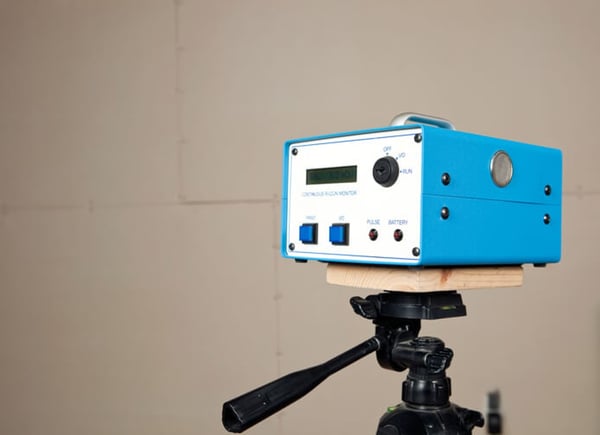Radon poisoning is a potentially deadly health concern that few people know about.
Luckily, if proper precautions are taken, radon poisoning can be prevented.
In the article below, we will discuss how people get radon poisoning and the steps to take to prevent it.
Table of Contents
- What Is Radon?
- How Are We Exposed To Radon?
- How Do We Get Radon Poisoning?
- What Are The Symptoms of Radon Poisoning?
- Radon Poisoning Gives Us Cancer?
- How Is Radon Poisoning Diagnosed?
- How Do We Prevent Radon Poisoning?
- Contact Radon Eliminator Today
What Is Radon?
Radon is a naturally occurring radioactive gas produced when uranium, thorium, and radium break down in soil, rock, and water.
After it's broken down, it's released into the air and is odorless, tasteless, and invisible.
Radon can accumulate in some places where ventilation is inadequate, such as a basement or an underground mine.
It can also build up inside buildings, and long-term exposure to high levels of radon can be dangerous to your health.
Lung cancer is unfortunately very commonly caused by exposure to radon. Read our blog post: "How Long Does It Take For Radon To Give You Lung Cancer?" for more information.

How Are We Exposed To Radon?
We're exposed to radon when we breathe it in.
Dangerous levels of radon can be found in your workplace, school, or any other building.
Most of us spend the most time in our homes, so that's where radon exposure is most likely.
Radon can come up through the ground and into your home through cracks in the foundation, and once it's through the cracks, it can get trapped inside and builds up. It can also get into your home through well water.
Radon exposure can happen in any type of home, whether it has a basement, a crawl space, or is built on a slab.
However, it's more likely to accumulate in homes that are:
- very well insulated
- tightly sealed
- located where the soil contains a lot of uranium, thorium, and radium
How Do We Get Radon Poisoning?
Radon poisoning occurs when large amounts of radon enter the body and cause harmful physical changes.
As a colorless, odorless, tasteless gas, radon is undetectable by human senses, making it especially dangerous.
Radon poisoning does not cause the same harmful, obvious symptoms as other radioactive substances.
Instead, many people never know they have radon poisoning until they develop lung cancer.
Radon occurs throughout most environments in tiny quantities.
However, it becomes dangerous when it accumulates in buildings.
What Are The Symptoms of Radon Poisoning?
Radon poisoning is symptom-less, meaning that it gives no meaningful indication of exposure.
People can have radon poisoning for years without ever knowing it.
A person cannot smell, taste, or see radon with the naked eye, and it doesn't produce any effects in the body unless it leads to lung cancer.
This is why we should take all necessary precautions against radon exposure.
A person starting to cough up blood, feel chest pain, or experience breathing difficulties should visit a doctor immediately to rule out radon poisoning and lung cancer.
Radon Poisoning Gives Us Cancer?
As we mentioned, radon gas can damage cells in your lungs, leading to lung cancer.
Every year radon is responsible for about 21,000 lung cancer deaths in the United States. That makes it the second leading cause of lung cancer, right behind cigarette smoking.
However, it could take 5 to 25 years to develop.
The early signs and symptoms of lung cancer are:
- persistent cough
- coughing up blood
- wheezing
- shortness of breath
- hoarseness
- chest pain
It's estimated that lowering radon levels below 4 pCi/L could reduce lung cancer deaths by 2 to 4 percent.
It's estimated that this could save about 5,000 lives.
How Is Radon Poisoning Diagnosed?
Unfortunately, there isn't a test currently available to diagnose or identify prior exposure to radon.
With the lack of available testing and noticeable symptoms, it is doubly important to minimize exposure to radon.
You should immediately see your doctor if you are experiencing any of the symptoms listed above.
It's best to treat lung cancer in the earliest stages before it has a chance to spread.

How Do We Prevent Radon Poisoning?
Some estimate that 1 in 15 homes in the U.S. has elevated levels of radon. Radon test kits are widely available and generally cheap or even free.
Home radon kits include a collector, and it should be left in the lowest habited room of the house for 2–7 days.
After that, the collector is sent to a laboratory for evaluation.
You can also hire a radon mitigation company to test your home for you to be sure it's done the right way.
If the radon readings are high, simply making the home airtight does not limit radon levels until implementing other measures.
Although you can test your home for radon yourself, you shouldn't try to remove it yourself. That should be left to the professionals.
If your results come back high, you need to contact a radon mitigation company so they can get started on the radon removal process.
Contact Radon Eliminator Today
Testing for radon is relatively inexpensive and easy to do, so don't hesitate to get started.
And if your test finds that there's too much radon in your home, it's time to contact the professionals.
The experienced team at Radon Eliminator are professionally certified Radon Mitigation Specialists with state of the art radon testing and removal equipment.
Radon Eliminator can serve each one of its customer's unique challenges.
To get started with Radon Eliminator, click the button below.





